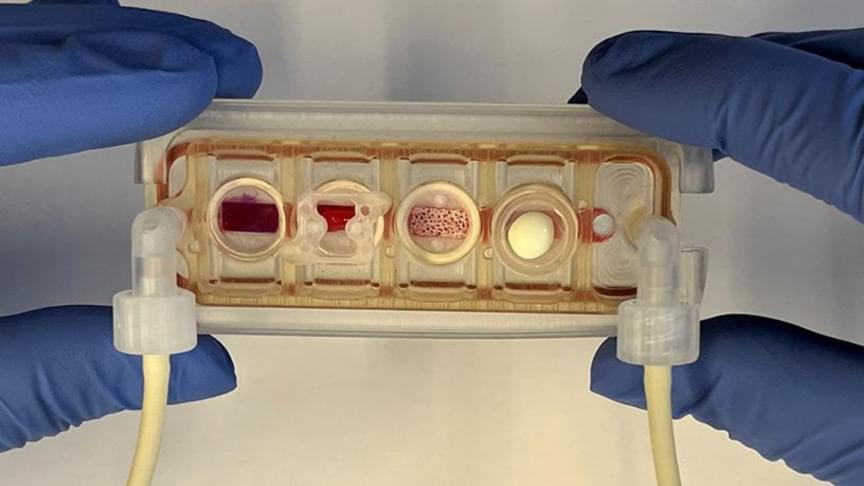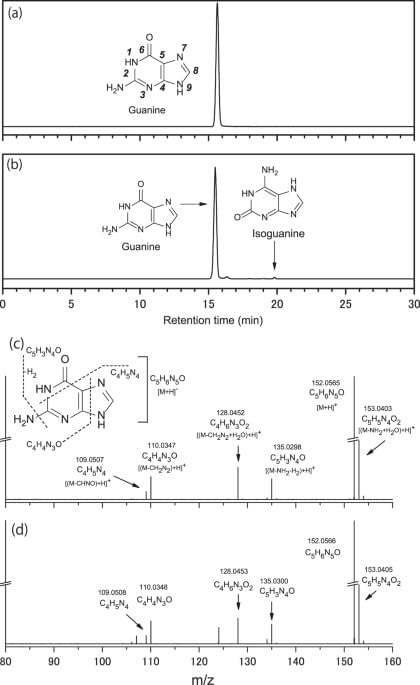By mimicking how the human body works on a chip, researchers can garner critical information about how diseases progress as well as the impact of drugs in treating them.


By mimicking how the human body works on a chip, researchers can garner critical information about how diseases progress as well as the impact of drugs in treating them.
Not an amazing update. All female rats are not getting the results the previous group of males got. To my knowledge human trials are still actively being set up for late this year.
In this video we report on the May 2022 update from Dr. Katcher’s experiment with E5, where he is testing to see how long the rats will stay alive if they are given an E5 injection every 90 days.
********************************************
Links for this video.
Sign up for the newsletter from NTZ Publishing here:
https://www.ntzplural.com/newsletter.
Reversing age: dual species measurement of epigenetic age with a single clock.
https://www.biorxiv.org/content/10.1101/2020.05.07.082917v1.full.
The entry on Dr Josh Mitteldorf’s Aging Matters blog.
Our discussion of original paper.
https://youtu.be/DokfEzQt_wk.
Playlist for Dr. Katcher August 2021 Interview Series.
Playlist 1 for Dr. Katcher.
https://www.youtube.com/playlist?list=PLkfzM7KJv6vaIQZ_n3WS6FHTpBtfS2lzw.
********************************************

Tenet Healthcare Corporation recently experienced a cybersecurity incident in April 2022, which resulted in a temporary disruption to a subset of acute care operations.
The report from Tenet comes on the heels of telephone and computer problems occurring at St. Mary’s Medical Center and Good Samaritan Medical Center in West Palm Beach Florida, that were reported by WPTV NewsChannel 5. Tenet health is the parent company for both of the medical centers.
Patients and staff have contacted WPTV NewsChannel 5 expressing concerns about patient care tied to limits of electronic charting and their inability to communicate by telephone.
Join us on Patreon!
https://www.patreon.com/MichaelLustgartenPhD
Papers referenced in the video:
Life-Span Extension in Mice by Preweaning Food Restriction and by Methionine Restriction in Middle Age.
https://pubmed.ncbi.nlm.nih.gov/19414512/
Low methionine ingestion by rats extends life span.
https://pubmed.ncbi.nlm.nih.gov/8429371/
Fasting glucose level and all-cause or cause-specific mortality in Korean adults: a nationwide cohort study.
https://pubmed.ncbi.nlm.nih.gov/32623847/
Total plasma homocysteine and cardiovascular risk profile. The Hordaland Homocysteine Study.
https://pubmed.ncbi.nlm.nih.gov/7474221/
Predicting Age by Mining Electronic Medical Records with Deep Learning Characterizes Differences between Chronological and Physiological Age.

The second half of Tsiolkovsky’s famous quote refers to not just living on the Earth but relying on it as we venture farther out into the cosmos. Even today, as the International Space Station orbits above at 28,000 kilometers per hour (17,500 miles per hour), those astronauts require constant resupply from the ground to stay alive. Future astronauts on the Moon might only have to wait three days to receive supplies from Earth, but as we move farther out into space, especially to Mars, this reliance will undoubtedly become far more tedious, time-consuming, and costly. Therefore, if humanity is to establish a long-term presence in space, we have to learn to use the on-hand resources we have at our disposal.
A team of researchers from the Indian Institute of Science (IISc), in collaboration with the Indian Space Research Organisation (ISRO), has developed a sustainable method for making bricks out of Martian soil, using bacteria and urea. Mammals, including humans, are the primary producers of urea. Because they secrete urea as the primary nitrogenous waste product, they are called ureotelic animals. Urea serves an important role in the metabolism of nitrogen-containing compounds by animals. These so-called “space bricks” can be used to construct building-like structures on Mars that could facilitate human settlement on the Red Planet.
The method for making these space bricks was published in PLOS One. A slurry is first created by mixing Martian soil (simulant) with guar gum, a bacterium called Sporosarcina pasteurii, urea, and nickel chloride (NiCl2). This slurry can be poured into molds of any desired shape, and over a few days, the bacteria convert the urea into crystals of calcium carbonate. These crystals, along with biopolymers secreted by the microbes, act as the cement holding the soil particles together. An advantage of this method is the reduced porosity of the bricks, which has been a problem with other methods used to consolidate Martian soil into bricks.
Our brain is constantly working to make sense of the world around us and finding patterns in it, even when we are asleep the brain is storing patterns. Making sense of the brain itself, however, has remained an intricate pursuit.
Christoff Koch, a well-known neuroscientist, famously called the human brain the “most complex object in our observable universe” [1]. Aristotle, on the other hand, thought it was the heart that gave rise to consciousness and that the brain functioned as a cooling system both practically and philosophically [2]. Theories of the brain have evolved since then, generally shaped by knowledge gathered over centuries. Historically, to analyze the brain, we had to either extract the brain from deceased people or perform invasive surgery. Progress over the past decades has led to inventions that allow us to study the brain without invasive surgeries. A few examples of imaging techniques that do not require surgery include macroscopic imaging techniques such as functional magnetic resonance imaging (fMRI) or approaches with a high temporal resolution such as electroencephalogy (EEG). Advances in treatments, such as closed-loop electrical stimulation systems, have enabled the treatment of disorders like epilepsy and more recently depression [3, 4]. Existing neuroimaging approaches can produce a considerable amount of data about a very complex organ that we still do not fully understand which has led to an interest in non-linear modeling approaches and algorithms equipped to learn meaningful features.
This article provides an informal introduction to unique aspects of neuroimaging data and how we can leverage these aspects with deep learning algorithms. Specifically, this overview will first explain some common neuroimaging modalities more in-depth and then discuss applications of deep learning in conjunction with some of the unique characteristics of neuroimaging data. These unique characteristics tie into a broader movement in deep learning, namely that data understanding should be a goal in itself to maximize the impact of applied deep learning.

A UK study has discovered five types of bacteria linked to aggressive prostate cancer. The breakthrough could help doctors identify who needs urgent treatment.
Every year, around 12,000 men in the UK die from prostate cancer, but many more die with prostate cancer than from it. So knowing whether the disease is going to advance rapidly or not is important for knowing who to treat.
Our latest study, published in European Urology Oncology, sheds some light on understanding which cancers will progress rapidly and aggressively and which won’t. Part of the answer lies with five types of bacteria.
For some years, we have known that pathogens (bacteria and viruses) can cause cancer. We know, for example, that Helicobacter pylori is associated with stomach cancer and that the human papillomavirus (HPV) can cause cervical cancer. There is also growing evidence that the bacteria Fusobacterium nucleatum is associated with colorectal cancer.

The hotspots of virus-jumping will be regions with species-rich ecosystems (particularly areas of Africa and Asia) and areas that are densely populated like India and Indonesia.

A 200-μm scale 3D reconstruction of the human brain was created based on ultrahigh-field quantitative MRI and light microscopy.

All DNA/RNA nucleobases were identified in carbonaceous meteorites. Having been provided to the early Earth as a component in carbonaceous meteorites, these molecules might have played a role for the emergence of genetic functions in early life.